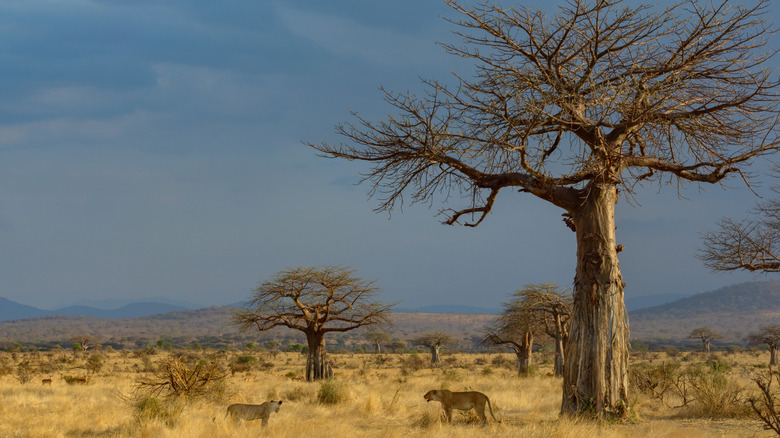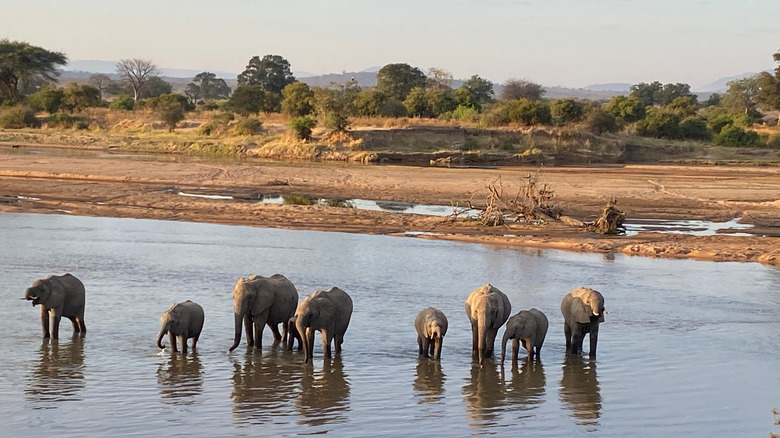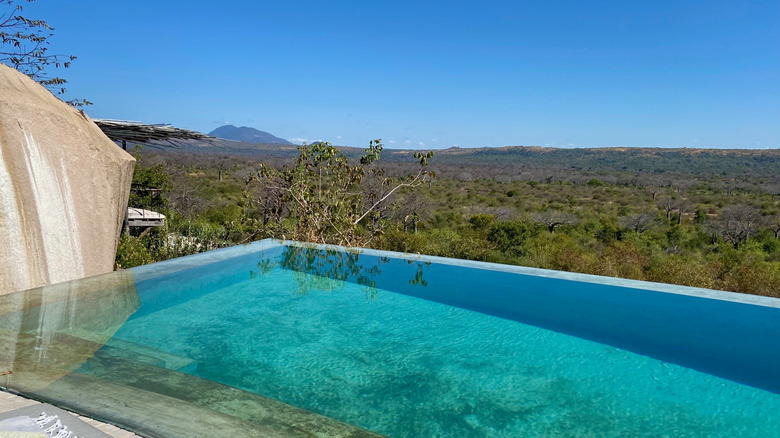When travelers think of a safari, the majestic savannahs of Tanzania’s Serengeti National Park often come to mind, brimming with wildfire and punctuated by acacia trees under a blue dome of sky. And while the Serengeti is one of the destinations that should absolutely be considered wonders of the world, there is another wildlife-rich national park located in the south of the country, which draws less than one-tenth of the visitors to the Serengeti. Ruaha National Park covers nearly 8,000 square miles, making it larger than the Serengeti and one of the largest on the continent. Renowned for its large populations of elephants, lions, wild dogs, and almost 600 bird species, Ruaha is a nature lover’s dream. A unique element of the park is the Great Ruaha River, which winds through the park, and offers the opportunity for seasonal boating safaris. And due to its remote location and under-the-radar status, you can enjoy the park’s massive geography without the crowds. Even though it’s far flung, Ruaha features several luxurious safari camps, so you don’t have to sacrifice any comforts.
To get to Ruaha National Park, travelers typically will fly directly to the park’s Msembe Airstrip, usually from Dar Es Salaam (1 hour 10 minutes). The best time to visit Ruaha National Park is the dry, summer season from June to October, when animals concentrate around water sources, making it is easier to spot wildlife. While November through February can be hot with the potential for rain, it is also lush with optimum bird-watching opportunities and more affordable rates. Avoid the months of March and April when some of Ruaha’s best safari camps close due to heavy rains.
What to see and do in Ruaha National Park
Spanning over 12 million acres, the enormous Ruaha National Park promises untouched and diverse landscapes, prolific wildlife viewing, and uncrowded wilderness. The topography is stunning, from undulating plains dotted with unique baobab trees to the watery Usangu wetlands. On four-by-four games drives, you’ll see a veritable Noah’s Ark of wildlife. In fact, the national park is home to Tanzania’s largest elephant population, as well as 10% of the entire world’s lion population. The park also has healthy populations of big cats, including leopards and cheetahs, as well as endangered wild dogs, giraffes, water buffalo, zebras, and pangolins. The only species of the classic safari “Big Five” that is not found in Ruaha is the rhinoceros. For a truly memorable safari experience, you can even embark on one of the best hot air balloon rides around the world to spot wildlife from above.
Birdwatchers will be thrilled that nearly 600 species of birds can be seen in Ruaha. Birding is especially diverse during the winter months when migratory birds arrive. Visitors can also head out on walking safaris in a small group to truly immerse in nature and get some exercise. Night drives are also available so you can spot nocturnal wildlife, such as lions, which are often most active after dark. You can even traverse the Great Ruaha River by boat and spot wildlife from the water. For more aquatic adventures, pair your Ruaha safari with time in Zanzibar, where you can enjoy a secluded tropical vacation at this exclusive, overlooked island in the Indian Ocean.




